Pothos root filtration?
- Thread starter eon aquatics
- Start date
You are using an out of date browser. It may not display this or other websites correctly.
You should upgrade or use an alternative browser.
You should upgrade or use an alternative browser.
How many pothos roots would complete the nitrogen cycle?
Im thinking probably 40+ individual and submerged pothos roots?
Im thinking probably 40+ individual and submerged pothos roots?
If your large vase aquarium is anything like my small hex tank then you can certainly rely on plant roots to perform your biological filtration for you.
I had both aquatic and terrestrial plants in mine and it ran virtually maintenance free for months and never registered nitrate in all that time.
Periodic water changes were still performed though to replenish micro nutrients found in freshwater.
However, to get to that stage it took a lot of trial and error. It's not an exact science, there are too many variables for me to say with conviction that you'd need x, y and z amount of this that and the other type of plant for it to work for you in your system.
Just start off with your pothos and test your water as you go. If it thrives and grows quickly with lots of healthy roots it shouldn't be too long before your tank is virtually self sustainable. Personally I'd stay away from any "additives" though.
Another important obvious variable for this to work successfully is bio load. A small bio load to start off with will help you no end in your goal, so stock sparingly!!
I had both aquatic and terrestrial plants in mine and it ran virtually maintenance free for months and never registered nitrate in all that time.
Periodic water changes were still performed though to replenish micro nutrients found in freshwater.
However, to get to that stage it took a lot of trial and error. It's not an exact science, there are too many variables for me to say with conviction that you'd need x, y and z amount of this that and the other type of plant for it to work for you in your system.
Just start off with your pothos and test your water as you go. If it thrives and grows quickly with lots of healthy roots it shouldn't be too long before your tank is virtually self sustainable. Personally I'd stay away from any "additives" though.
Another important obvious variable for this to work successfully is bio load. A small bio load to start off with will help you no end in your goal, so stock sparingly!!
Do you cut stems from your mother plant and allow roots to grow. That's the method I use.If your large vase aquarium is anything like my small hex tank then you can certainly rely on plant roots to perform your biological filtration for you.
I had both aquatic and terrestrial plants in mine and it ran virtually maintenance free for months and never registered nitrate in all that time.
Periodic water changes were still performed though to replenish micro nutrients found in freshwater.
However, to get to that stage it took a lot of trial and error. It's not an exact science, there are too many variables for me to say with conviction that you'd need x, y and z amount of this that and the other type of plant for it to work for you in your system.
Just start off with your pothos and test your water as you go. If it thrives and grows quickly with lots of healthy roots it shouldn't be too long before your tank is virtually self sustainable. Personally I'd stay away from any "additives" though.
Another important obvious variable for this to work successfully is bio load. A small bio load to start off with will help you no end in your goal, so stock sparingly!!
Can anyone with this type of filtration post pictures of the roots?
Sometimes when a plant rooted in soil is then forced to live in water, they rot.
Using just the stems, the plant adapts as it grows in the new environment.
I have used a lot of pothos.plants hung in tanks, and trained with roots worked into floating logs over the decades.
And found pothos realy needs to develop a healthty root system within the taml, to make a significant difference at nitrate reduction.
But pothos is not a panacea, so experimenting with other species, I have found a number of other terrestrial plants that do just as well, some maybe better.
One is Umbrella Palm (Papyrus) that is semi-aquatic, living happily with roots in water, but stems emergiant.
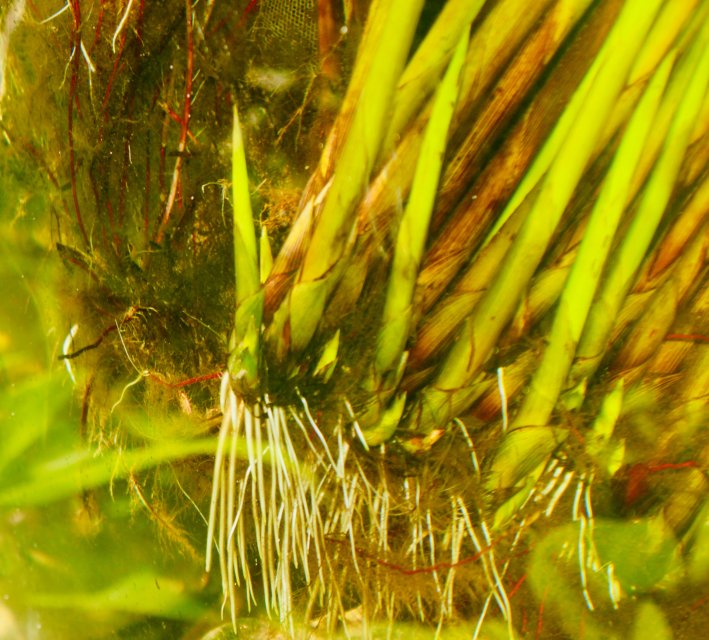
Another common houseplant is Philidendron, I often see certain varieties living semi-submerged living on lales in Panama
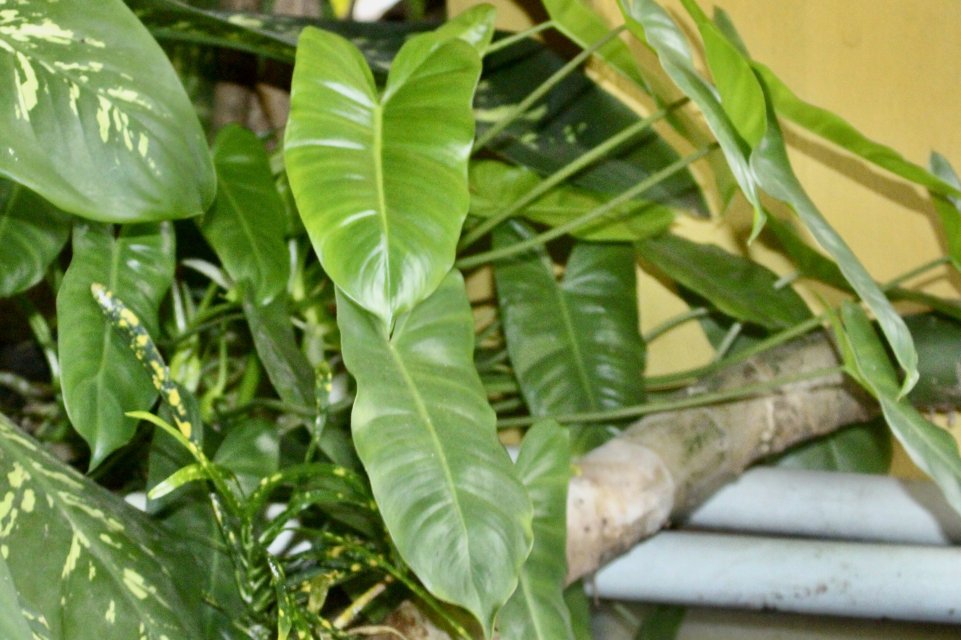
But my favorite these days is Dieffenbachia, bare root in top of my 6 ft 180 gal (toxic if eaten by dogs or cats, fish instinctually don't injest it)
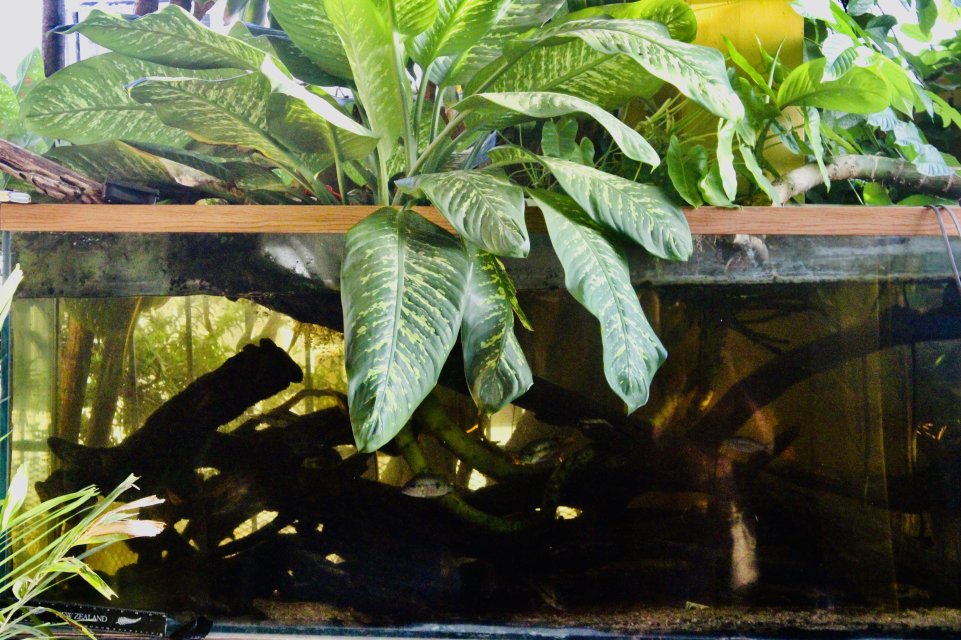 ,
,
The stems get thicker than my wrist, and it sucks up Ammonia, nitrite, and Nittrate like a sponge
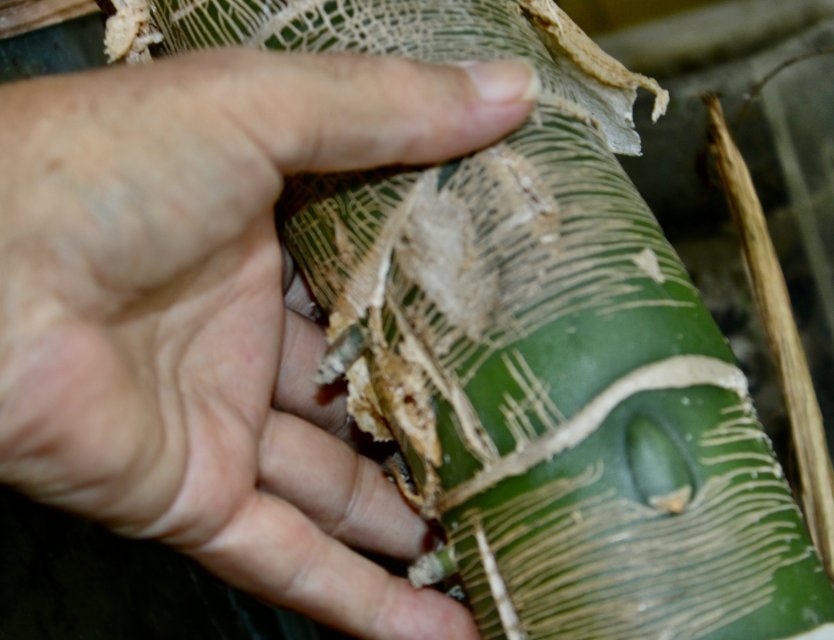 ,
,
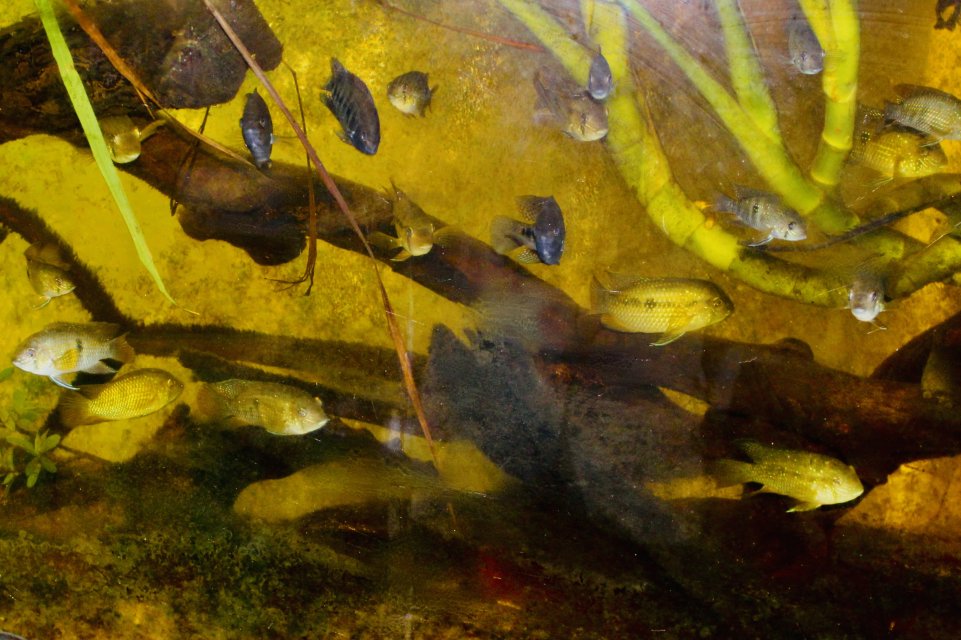
With these plants and others in the sump like Vallisneria and mangrove trees, I never have issues
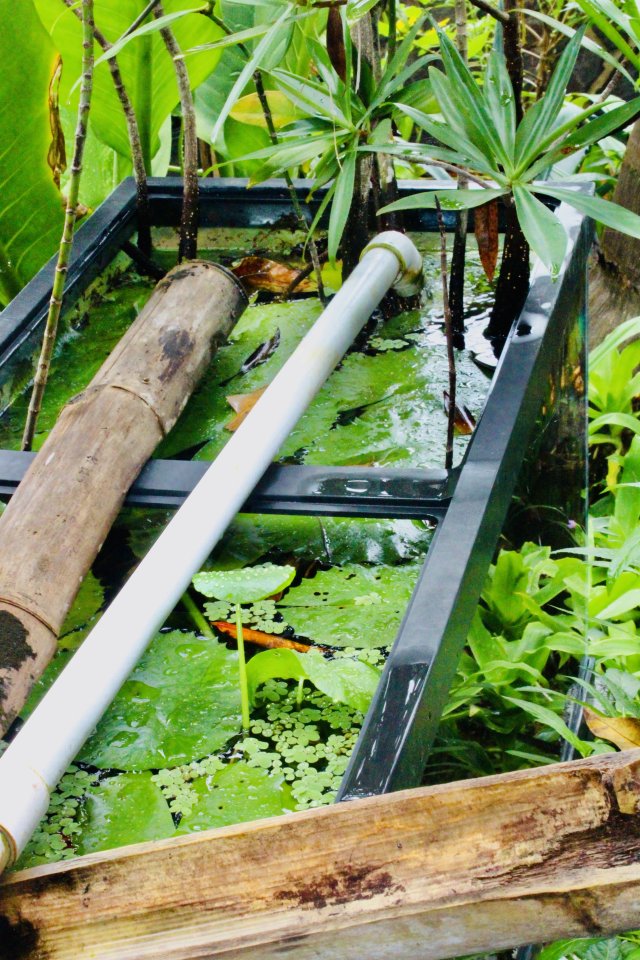
my tests results are 0.00 ammonia, 0.00 nitrite, and almost undetectable nitrate.
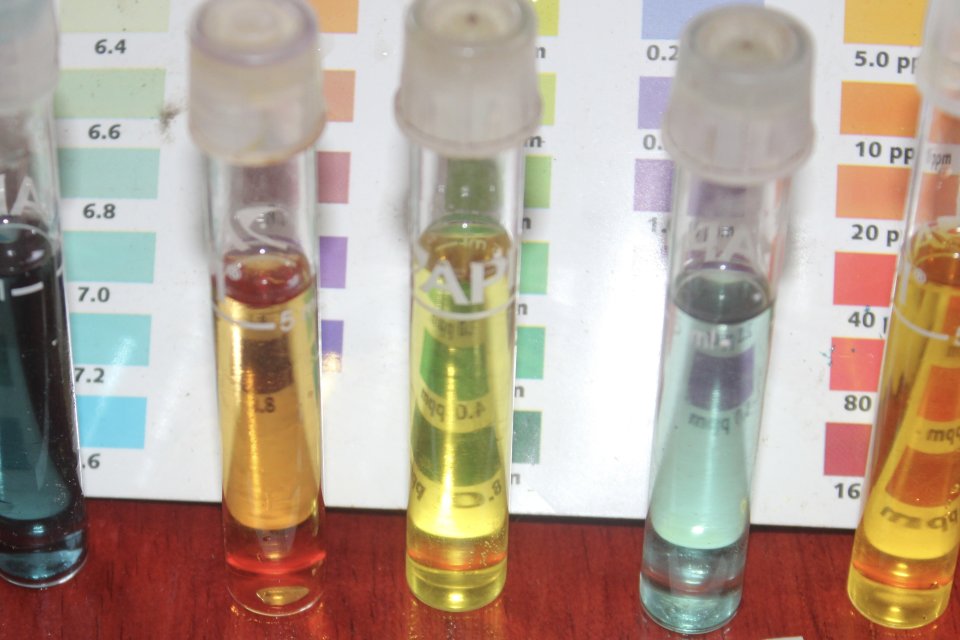
No one can tell you what results if your tank will be, without knowing its volume
1/2 gal, 1 gal, 5 gal, ?
without doing regular testing for ammonia, nitrite, and nitrate?
and what and how many fish
1 male betta, 3 females, half dozen guppies?
And what about air exchange, to break surface tension
an airstone, a hang on back filter? nothing?
You might get away with a small anabantid that can use supplimenta air from the surface, or a gold fish if you make 50% daily water changes.
As someone above said, there are lots of variables to consider, with out much info to go on.


Using just the stems, the plant adapts as it grows in the new environment.
I have used a lot of pothos.plants hung in tanks, and trained with roots worked into floating logs over the decades.
And found pothos realy needs to develop a healthty root system within the taml, to make a significant difference at nitrate reduction.
But pothos is not a panacea, so experimenting with other species, I have found a number of other terrestrial plants that do just as well, some maybe better.
One is Umbrella Palm (Papyrus) that is semi-aquatic, living happily with roots in water, but stems emergiant.

Another common houseplant is Philidendron, I often see certain varieties living semi-submerged living on lales in Panama

But my favorite these days is Dieffenbachia, bare root in top of my 6 ft 180 gal (toxic if eaten by dogs or cats, fish instinctually don't injest it)
 ,
, The stems get thicker than my wrist, and it sucks up Ammonia, nitrite, and Nittrate like a sponge
 ,
, 
With these plants and others in the sump like Vallisneria and mangrove trees, I never have issues

my tests results are 0.00 ammonia, 0.00 nitrite, and almost undetectable nitrate.

No one can tell you what results if your tank will be, without knowing its volume
1/2 gal, 1 gal, 5 gal, ?
without doing regular testing for ammonia, nitrite, and nitrate?
and what and how many fish
1 male betta, 3 females, half dozen guppies?
And what about air exchange, to break surface tension
an airstone, a hang on back filter? nothing?
You might get away with a small anabantid that can use supplimenta air from the surface, or a gold fish if you make 50% daily water changes.
As someone above said, there are lots of variables to consider, with out much info to go on.


Last edited:
Echoing some or what was shared above...
De-soiling an established plant and plopping it in water will almost certainly result in root rot and a suffering plant. That said, you can stick a clipping in water and it will almost certainly grow.
I broke a piece off a plant a few months ago and tossed it on the glass top of an aquarium. It was about 6 or 7 inches long and had 3 leaves... it's now about 12 feet long, has about 60 leaves with a couple of them close to the size of a dinner plate and has about 1.5 cubic feet of root ball in the aquarium.
As mentioned... In my experience they do a great job at eating nitrates. I think you'll still rely on typical bacteria to convert the ammonia to nitrite to nitrate. But we don't need external filtration to get that to happen... But... I'd be leery of a total lack of water movement. Dead spots can allow some funky stuff to grow (anaerobic bacteria) which can then form unwanted gasses. We also need the natural gas exchange that happens at the water surface but is greatly hampered by the film that forms on stagnant water.
By all means though... tinker with it. You'll find aspects of it that doesn't work... and you'll find ways around those problems... and you'll find new problems... and hopefully you'll enjoy the whole process.
De-soiling an established plant and plopping it in water will almost certainly result in root rot and a suffering plant. That said, you can stick a clipping in water and it will almost certainly grow.
I broke a piece off a plant a few months ago and tossed it on the glass top of an aquarium. It was about 6 or 7 inches long and had 3 leaves... it's now about 12 feet long, has about 60 leaves with a couple of them close to the size of a dinner plate and has about 1.5 cubic feet of root ball in the aquarium.
As mentioned... In my experience they do a great job at eating nitrates. I think you'll still rely on typical bacteria to convert the ammonia to nitrite to nitrate. But we don't need external filtration to get that to happen... But... I'd be leery of a total lack of water movement. Dead spots can allow some funky stuff to grow (anaerobic bacteria) which can then form unwanted gasses. We also need the natural gas exchange that happens at the water surface but is greatly hampered by the film that forms on stagnant water.
By all means though... tinker with it. You'll find aspects of it that doesn't work... and you'll find ways around those problems... and you'll find new problems... and hopefully you'll enjoy the whole process.


